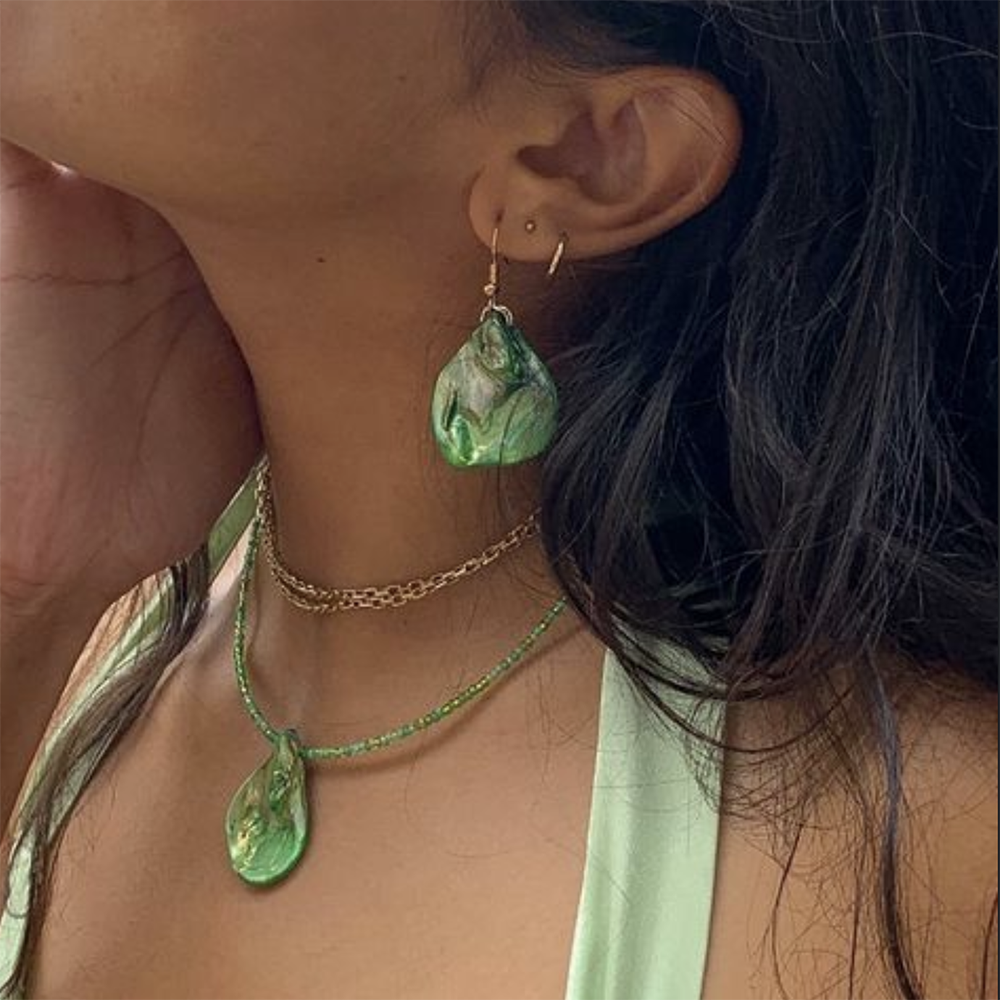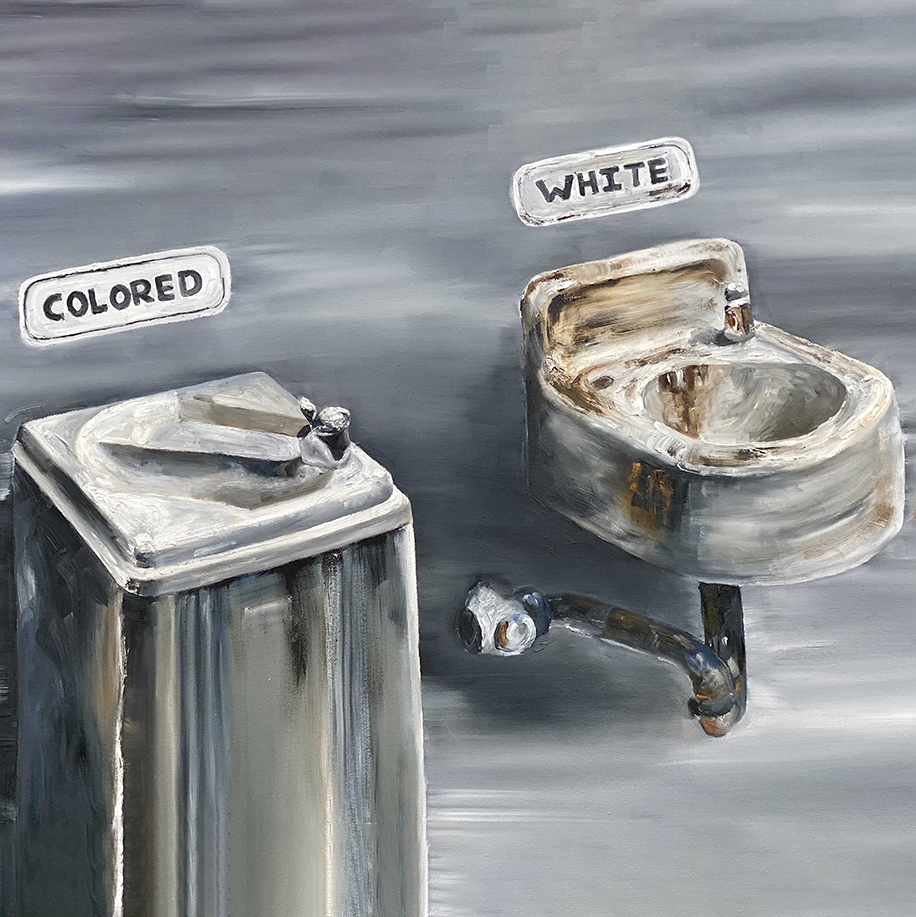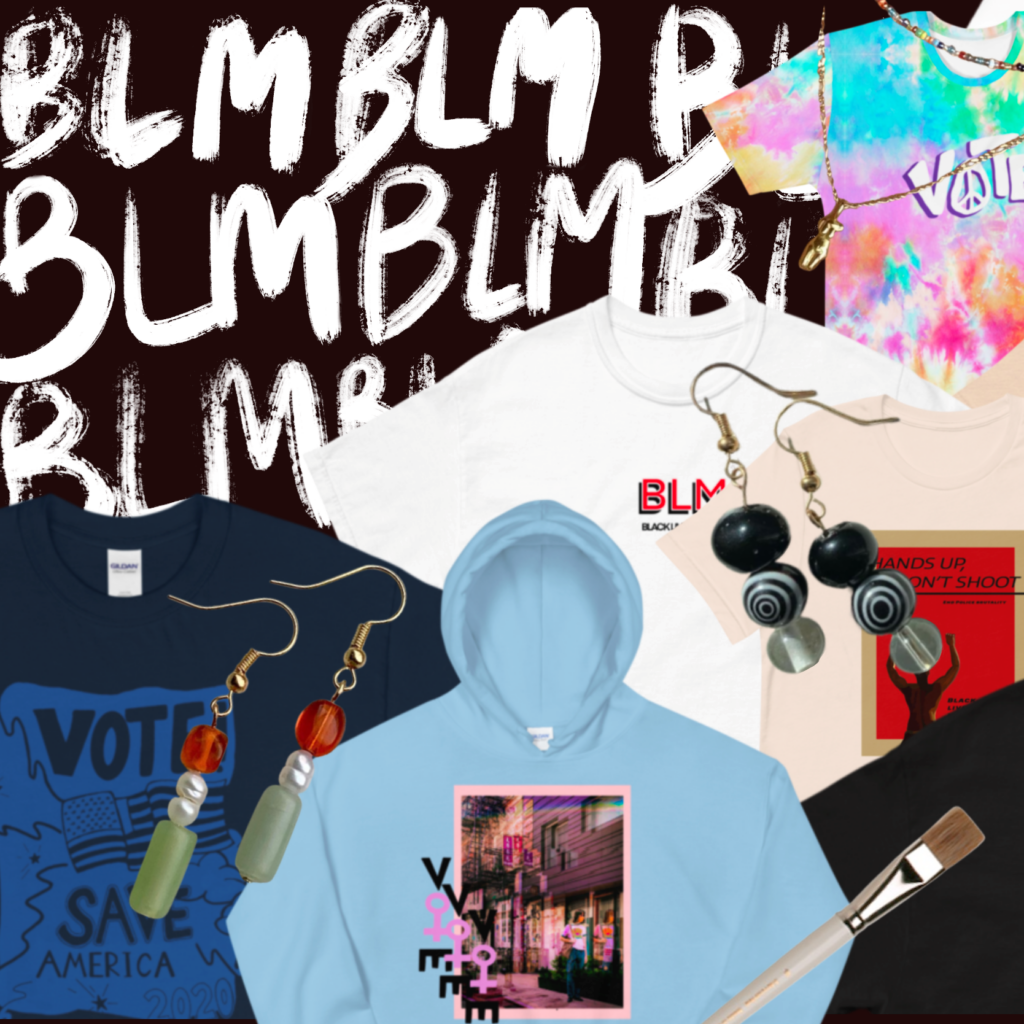In the wake of the COVID-19 pandemic and protests in 2020, visual artists’ talents put them in an exceptional position to educate their audience and support social justice causes. Georgetown University’s student artists have endorsed social justice causes through their creations. By leveraging their artistic talents, these students have found ways to fundraise and call attention to social justice issues and bring style to social justice.
“I am someone who tends to incorporate my interests and talents together whenever possible. I knew that, in order to make my activism feel authentic and truly represent what I stand for, I could integrate my love for fashion,” jewelry maker and visual artist Sonia Paz Canton (SFS ’23) said in an interview with The Hoya.
While student activism may evoke images of young people canvassing for a political candidate or marching in the streets, the works of student artists have incentivized students to fundraise for causes they believe in.
The Art
Geritza Carrasco (COL ’22) has channeled her creativity into making homemade earrings and embroidery, which she sells on Instagram to contribute to the Georgetown Mutual Aid Network, a fund created by students to support peers caught in difficult economic circumstances amid the COVID-19 pandemic.

Carrasco originally started making jewelry for herself and her friends. After she realized there was a demand for these items, she then created an Instagram account to display the trinkets she made. Her feed includes dainty multicolored chokers, dangly beaded earrings and intricate embroidery work captured in soft lighting. Much of her jewelry is decorated in bright reds and greens and accented with little pearls or wood. Carrasco’s passion for creation started as a fun hobby and has evolved from there.
“Soon it just turned into people asking me to sell earrings or embroidery pieces,” Carrasco said in an interview with The Hoya.
Instagram and other social media platforms have become increasingly important spaces for young visual artists to exhibit and sell their work, particularly during the COVID-19 pandemic. In this vein, Paz Canton created the account @youthcxllective to spread resources and information on social justice issues in an artistic and digestible manner to encourage discussion among young adults. Paz Canton’s account features colorful graphics and digital artwork that address topics ranging from unhealthy beauty standards to current events in Latin America to mental health resources to the Black Lives Matter movement. Although this account is not intended for fundraising, it still uses art to spread the word.
“I was inspired to create @youthcxllective because of the gap I saw in resource guides, educational content, and a list of local/international organizations to support amongst my social community,” Paz Canton wrote in an email to The Hoya. “During the time of the Black Lives Matter protests in LA a lot of polarizing issues and important topics were being brought up, especially on social media, but there was no informative source that facilitated the dialogues.”
Ethan Clark (MSB ’22) was also inspired to create an Instagram account during the pandemic, @theartofcharles_, to exhibit his visual art pieces, many of which examine the history of racism in the United States. Clark’s work is hyperrealistic and utilizes different media, including oil on canvas, charcoal and even scratchboard.
“I enjoy that I am able to express my emotions through my paint brush and the canvas. When I paint I get lost in what I’m doing and I’m able to escape from reality,” Clark wrote in an email to The Hoya.
Themes of entrapment and oppression run through his works. One of Clark’s most recent paintings is titled “Separate but Equal” and features a pristine water fountain labeled “Colored” and a dilapidated water fountain labeled “White.”

“I was inspired by my emotions about equality and equal rights for people of color in America,” Clark wrote in an email to The Hoya. “I wanted to create an artwork that would cause people to think from a different perspective, something that spoke through the canvas.”
Clark’s artwork is intended to create dialogue rather than raise money, although he hopes to sell his pieces for a cause in the future.
The Causes
Visual art has been a feature of the Black Lives Matter Movement, from the mural on Black Lives Matter Plaza to viral portraits of Breonna Taylor. Amid anti-racism protests this summer after the police murder of George Floyd, Georgetown sophomore Jackson Edwards (COL ’23) wondered how he could contribute to the Black Lives Matter movement and eventually chose to do so through fashion.
Edwards’ clothing company, Fit Your Values, sells streetwear fashion collections centering on social justice movements, such as the Black Lives Matter collection, designed by Edwards’ co-founder and University of Chicago sophomore Caitlin Ellithorpe. All profits benefit humanitarian organizations such as the Okra Project, a food assistance program supporting the Black trans community; Black Women’s Health Imperative, an organization promoting the health and wellness of Black women and girls; and the Equal Justice Initiative, whose primary goal is to end mass incarceration, according to the Fit Your Values website.
The designs featured in the Black Lives Matter collection draw from the anti-police brutality and anti-racism movements that spread across the country over the summer, including a t-shirt displaying “Criminalize Police Brutality” and a poster declaring “All Lives Can’t Matter Until Black Lives Matter.”
“I think that this summer—particularly following the murders of George Floyd, Breonna Taylor, and others—forced us to ask ourselves how we could leverage our platforms to cause tangible change and go beyond just posting a black square on Instagram,” Edwards wrote in an email to The Hoya. “Fashion seemed like a natural choice in that clothes could be used as both a fundraising mechanism and a wearable endorsement of certain movements.”

Edwards is not the only student who has taken his fundraising to nationally known nonprofits. In addition to raising awareness through @youthcxllective, Paz Canton used her jewelry-making expertise to support Border Angels, a nonprofit that works to enact immigration reform and defend the rights of migrants and refugees along the United States-Mexico border.
“I sold the butterfly earrings because they symbolize migration and the beauty of the immigrant community. Although migration can pose various challenges and barriers, it’s a transformative experience that elicits a certain resilience. I was inspired to collaborate with Border Angels after being completely floored with the amazing work they do to promote humane advocacy,” Paz Canton wrote in an email to The Hoya.
While Paz and Edwards both chose to donate to national organizations, Carrasco found a way to make a local impact in the Georgetown community through the money she has raised with her jewelry.
“I support Georgetown Mutual Aid with my whole heart, but don’t necessarily have the means to contribute as much or as frequently as I would like to,” Carrasco said. “I figured that selling rings, which are relatively inexpensive to make, and funneling those profits to the fund would be the best way I could contribute with what I have. I also hoped that receiving a little gift would incentivize more people to contribute to this really important organization, and thankfully it did!”
Carrasco was able to fundraise around $100 for Georgetown Mutual Aid, with reproductive rights student group H*yas For Choice matching all of her fundraiser proceeds. Donation matching as a method of fundraising has been particularly helpful, Carrasco said, as her primary consumer demographic is Georgetown students who appreciate being able to help their fellow students while also investing in wearable, meaningful jewelry.
The Intersection
Students like Clark and Paz Canton have embraced head on social justice movements in their visual art.
Paz Canton said the role of art is an important medium for making decisive sociopolitical statements.
“There is significant and unparalleled value in integrating wearable art into activism. Everything we wear is a presentation of how and what we stand for. Our fashion communicates our personalities and ideas. If we want to vocalize our opinions in a creative and authentic manner, we can and should try to be particular with our choices such as how we dress,” Paz Canton said. “Art, especially fashion, is a unique medium of expression that allows creatives to incorporate their varied talents and personal views.”
Paz Canton said artists have a responsibility to participate in social justice movements, and their roles in social justice movements are crucial.
“Artists and creatives must use their platforms and reach to best support their followers and their communities,” Paz Canton said. “By participating in social justice initiatives and integrating their work creatives are able to better, more sustainably improve the conditions of those around them that are in more vulnerable positions.”
When it comes to creating his art, Clark wrote that he is inspired to bring attention to national and global issues.
“If there’s an issue or theme that I feel I can relate to people with, then I think it’s a topic that should be incorporated,” Clark wrote. “It’s important that problems in both our country and the rest of the world are addressed.”
Paz Canton said her creative leanings have given her a distinct edge when it comes to supporting what she believes in.
“My creative talent pursuits have allowed me to bolster my network and expand outreach and financial resources to organizations I truly believe in,” Paz Canton said.
If students want to turn their art into activism, the most important thing is to just get started, according to Edwards.
“Volunteer on a campaign, join a protest, send a letter to your Representatives in Congress, or find another tangible thing you can do,” Edwards wrote. “Once people have cleared that initial barrier to entry of getting started, I think finding ways to advocate for your beliefs becomes relatively seamless.”
Senior Guide Editor Emma Ginsberg contributed reporting.













